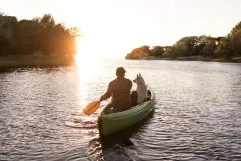
Tourism, the environment and, above all, health
Holidays should contemplate a comprehensive view of human, animal and environmental health to prevent the transmission of diseases between different species.
During the COVID-19 pandemic we were able to see the effects that our actions could have on the health of other people. At the same time, it forced us to reflect on a way of understanding life, where we took for granted that we could enjoy the right to a virtually limitless mobility for ever more. As Miguel del Reguero explains correctly “human health is closely linked to the biosphere, which is the living part of our planet. For this reason, we must manage to understand that we cannot be healthy without healthy flora or fauna.”
One Health Tourism
However, this does not mean that tourism should become an adversary of the natural resources. By contrast, the sector can make a positive contribution to the environment, if there is an effective collaboration between the public administrations and tourism companies. At the same time, it is obvious that some practices in the sector mean risks, such as the possibility of exposure and transmission of diseases or the degradation of the ecosystems. In view of this, a One Health approach is necessary, which proposes a comprehensive view of human, animal and environmental health.
Back in 2021, the World Tourism Organisation (WTO) proposed a series of recommendations for a transition towards ecological travelling, amongst which a commitment to the wellbeing of the rural communities, the exploitation of the opportunities offered by technology and digitalisation or the development of sustainable practices all stand out. On an individual scale, the most effective step is to maintain a safe distance between people, wildlife and pets in order to prevent the transmission of diseases between the different species. This takes on special importance when we come into contact with animals with the closest genetic relationship to us, such as large apes, with which we share over 98% of our DNA. For this reason, in the case of these animals, the recommended observation distance is usually between seven and ten metres.
It is also important to take into consideration animal behaviour and movements. We must respect the paths and observation areas indicated in order to not barge into migration routes, shelters or roosts.
Rural destinations
Here we summarise the fundamental points of the WTO’s proposals to contribute to the sustainability in environments with a natural ecosystem to be conserved:
- Tourism must take an active part in the fulfilment of the Sustainable Development Goals of the 2030 Agenda.
- The governments of the different public administrations must promote so-called “smart destinations”, in terms of criteria such as accessibility and sustainability.
- The public administrations must join the Measuring of the Sustainability of Tourism (TSM) initiative, recognised by the Statistics Commission of the United Nations as the most effective way of calculating the environmental, economic and social impact of tourism.



